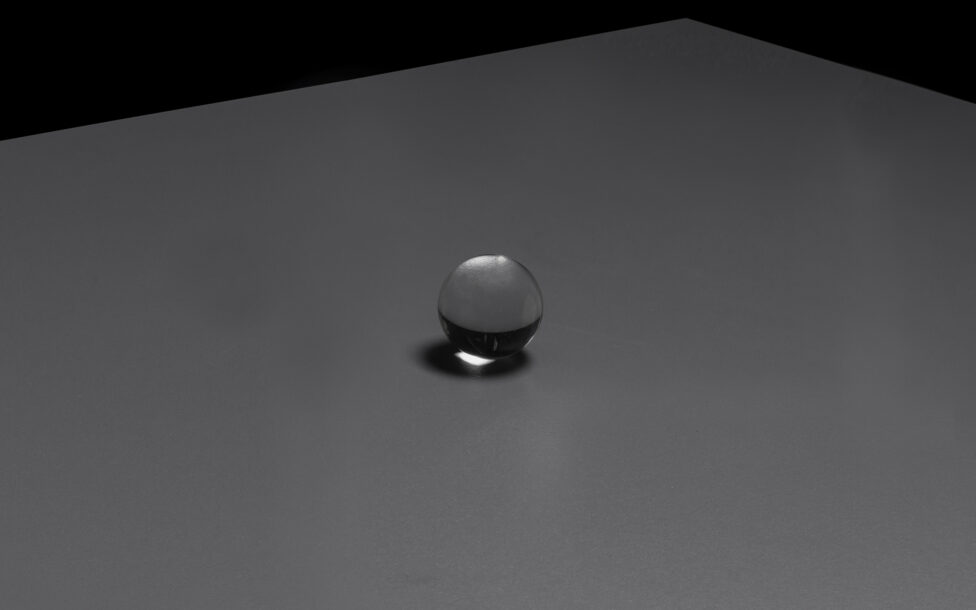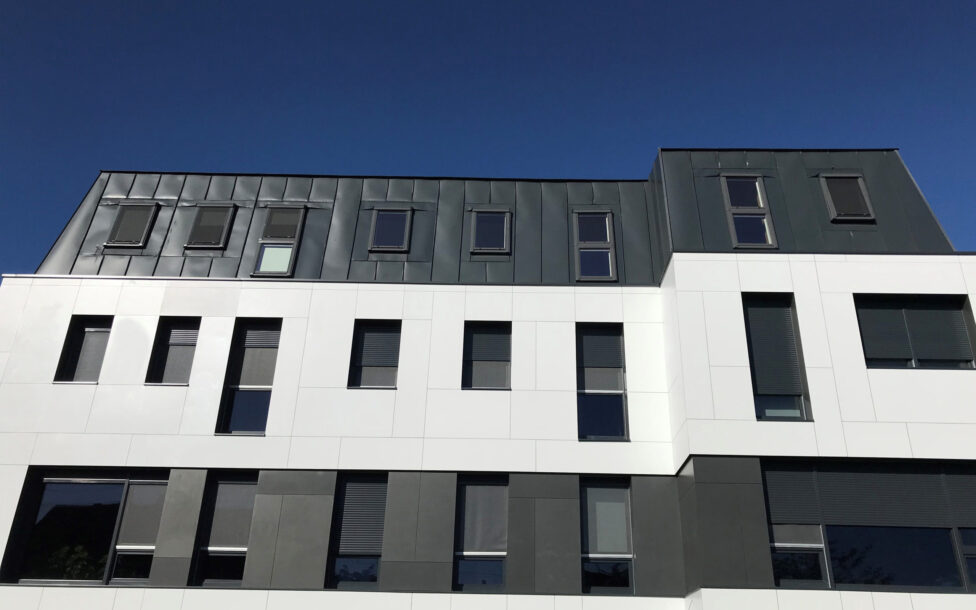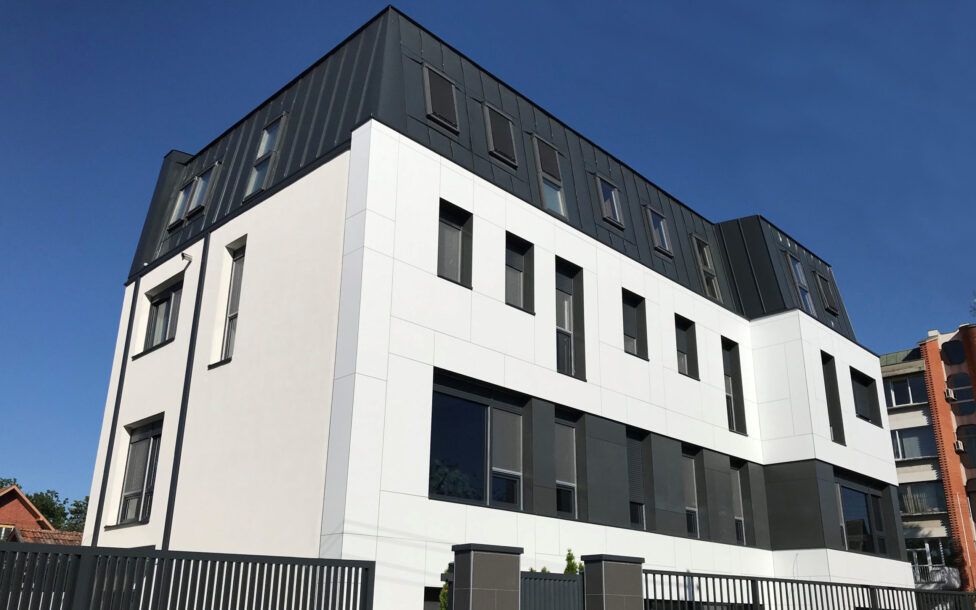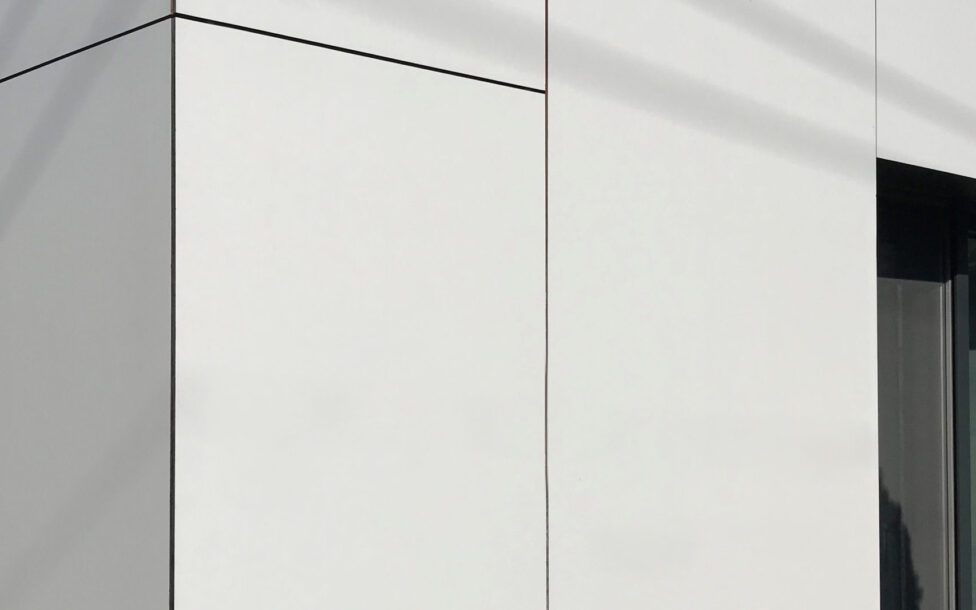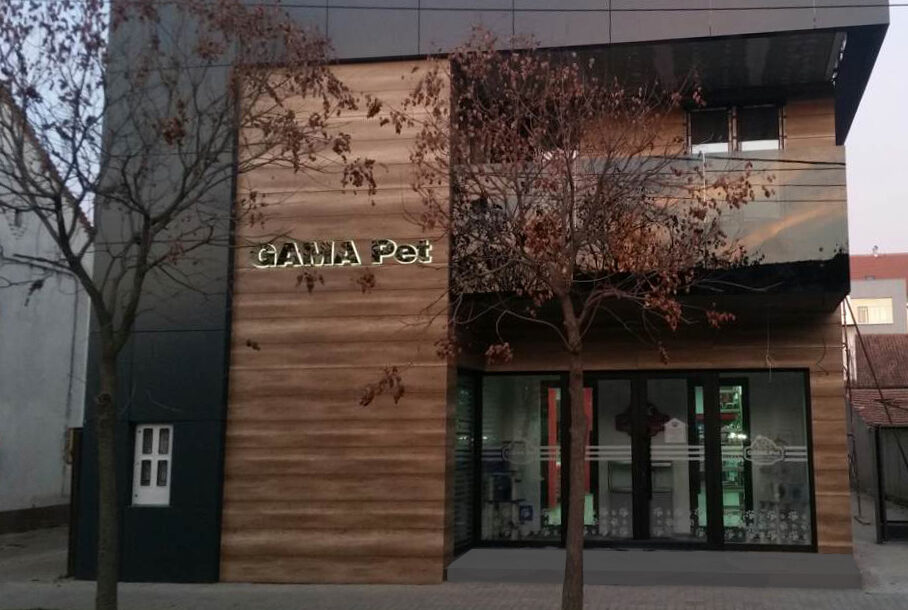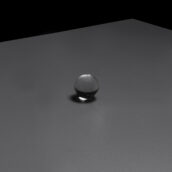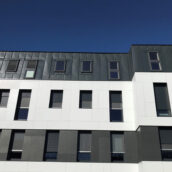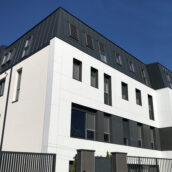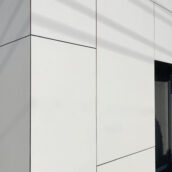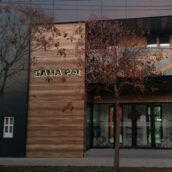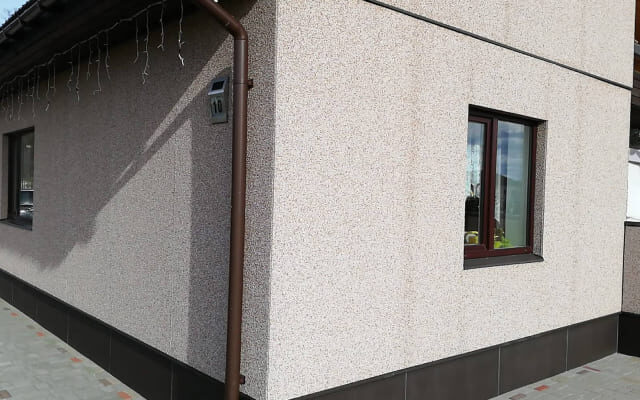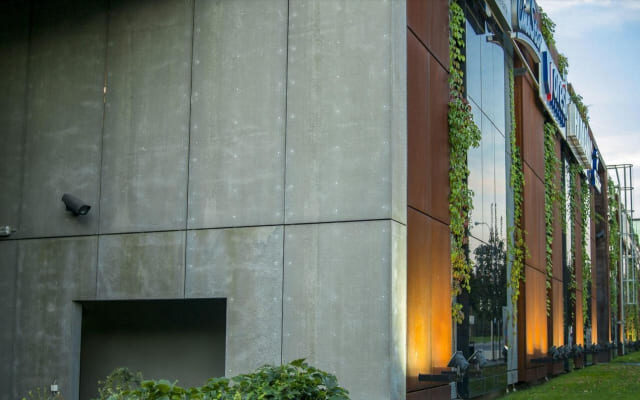ASD LAMINAT Exterior
ASD Exterior is an extremely weather resistant, structurally stable, self-supporting, robust and solid composite material manufactured at a high temperature at 150° and with great pressure at 9 Mpa with the use of High-Pressure Laminate HPL machines in compliance with EN 438 – Part 6 and EN 438 – Part 7. The core part of the material is comprised of phenolic resin impregnated wood-based saturated virgin fiber kraft paper layers. Whereas, its decorative surfaces are made of thermosetting resin impregnated decorative wood-based cellulose paper layers reinforced with UV resistant films. ASD Exterior panels are available in standard quality ASD Exterior and flame and fire-retardant quality ASD Exterior-FR.
Product colors
ASD Exterior is available in 90+ standard decors & designs.
For further information and more colors, have a look at the catalogue or contact us.
Green Saphire 1017
Green Saphire 1017
Pink Kunzite 1090
Pink Kunzite 1090
Night Blue 1125
Night Blue 1125
Silver Brunia 1009
Silver Brunia 1009
Walnut Butter 1096
Walnut Butter 1096
Longmont Stone 5124
Longmont Stone 5124
Lviv Concrete 5147
Lviv Concrete 5147
Jadaite 5192
Jadaite 5192
Aspen Oak 3102
Aspen Oak 3102
Balmore Oak 3229
Balmore Oak 3229
Goose Cove Oak 314
Goose Cove Oak 314
Eire Chestnut2 3180
Eire Chestnut2 3180
Product sizes
Standard Size Thicknesses
1300 mm x 3050 mm 6 mm | ~ 8.9 kg/m2
1000 mm x 2150 mm 8 mm | ~ 11.9 kg/m2
1220 mm x 2440 mm
Properties
- Durable, solid, sturdy and long lasting. Non-corrodible and non-splintering.
- Extremely weather, water, heat and frost resistant, UV-resistance and color stability.
- Energy efficient and eco-friendly when used as facade cladding material.
- Being of homogeneous construction, dimensionally stable and mechanically strong.
- Easy to modify and demountable.
- Moisture and thermal control when used as facade cladding material.
- Enhanced indoor environmental quality IEQ when used as facade cladding material.
- Improved acoustics by 14 dB when used as facade cladding material.
- Superior impact resistance.
- Inherently antibacterial with hypoallergenic properties.
- Easily machinable, workable and quick to install.
- Self-supporting when used as facade cladding material.
- Resistant to mold, mildew decay and rot, termite resistant.
- Optimum fire behavior, does not melt, drip or explode.
Application
ASD Exterior is excellent for overcladding and renovating older buildings, adding an extra insulation layer and contributing value and aesthetic appreciation with minimal impact on the substructure of the building which is a great, budget friendly method of recycling existing structures.
ASD Exterior is made for all outdoor applications. Aside from its use as a facade cladding material, it can also be used for any other outdoor-application such as balconies, exterior furniture, sunblinds, fascias, soffits, canopies, parapets, signages, porches, balustrades, decorative fences, shutters and for a wide range of other exterior applications.
Installation
Dimensional Stability
As ASD Exterior Panels are robust and non-reactive, and of homogeneous, excellently dense, highly tensile nature, their pull-out strength is absolutely fantastic for fixings and fasteners. Cut edges, drilled holes and engraving the surface of the panels do not require any special treatment afterwards and the panels can be applied as they are. ASD Exterior Panels may shrink at low humidity levels as they lose moisture and, expand at high humidity levels as they absorb moisture. Hence, allowing the panels to acclimatize at their final destination both before their fabrication and installation is recommended. Before processing and installing, we recommend the panels to be left in a well-supported, ventilated, horizontal position for a period of 1 day per mm of thickness, consequently, allowing the panels to acclimatize for avoiding any deformation.
Please note, Thought must be given to this potential dimension change at the design and installation stage. (drawing here?)
Drilling
For drilling ASD Exterior panels, we recommend the use of drills for plastics. The drills must have a point angle of 60°- 80° instead of the normal 120° that is used for drilling metals. The feed speed of the drilling head and the pressure being applied must be gently lowered when approaching the point of breakthrough in order to prevent a breakout on the reverse side of the panel. In addition, for preventing breakouts, we recommend the use of a completely flat and stable underlay panel to be used such as plywood or chipboard. When blind boring, thought must be given to ensure that 1.5 mm of material remains between the hole and the reverse side of the panel. We do not recommend panels less than 8 mm for concealed fixing. Moreover, a high drilling speed is to be used to avoid any chipping. Screws into the edges are to be avoided in general. If a screw is to be positioned near an edge, we recommend that they are placed no closer to an edge than 75 mm to avoid splintering and breakouts.
Please note, Thought must be given to this potential dimension change at the design and installation stage.
Panel Thickness: 6 mm | 450 mm | 550 mm
2 Fixings in One Direction: 8 mm | 600 mm | 750 mm
3 Or More Fixings in One Direction: 10 mm | 750 mm | 900 mm |
Fabrication
Due to the high density of ASD Exterior panels, processing them is similar to the processing of hardwood panels. Tools that are designed to process hard materials should be used to process ASD Exterior panels. Worn out, improper and poorly maintained tools can result in chipping and/or localized heating and therefore in poor cuts. For a sound result we recommend the use of either a tungsten carbide tipping TCT or Polycrystalline Diamond tooling PCD. It is of great importance to avoid any vibration during processing and to keep the panels completely flat and stable. The feed speed must be optimized properly for smooth cuts. The larger the saw blades yield, smoother the cuts will be. We recommend the use of circular bench saw with blade diameter of 300 mm - 400 mm | 11.811 in - 15.748 in and at least with 96 teeth. For deburring the edges, a handheld router or a high-grade sand paper can be used. The decorative surface of the panel is where the tool should engage, the same rule being applicable to all types of machining tools. The higher the saw blade the better the top cut and the worse the bottom cut will be and vice versa. Breakout on the underside of the panels can be reduced by using a base- board of plywood or a hardboard beneath the ASD Exterior panels. We recommend the use of either a Trapezoidal flat tooth or an Alternate tooth for a smooth cut. In addition, a saw entry angle of 45° is optimal and recommended.
Please note: When processing ASD Exterior Panels with a CNC machine, it is a must to remove the transportation protection films beforehand as the transportation protection films may decrease the suction power of the CNC bed which can affect the stability of the panels therefore resulting an unintended outcome.
Transportation & storage
ASD Exterior Panels should be handled with caution in order not to damage their edges and decorative surfaces. Any form of dirt or dust between the panels must be avoided as the stack weight of the panels itself can be a possible cause of damage albeit the excellent surface hardness and the transportation protection films. During transportation, it is substantial to use pallets of appropriate size to support the whole of the panel area. Pallets must be strong and stable enough to support their load without bending. When transporting stacks of panels with mechanical handling vehicles, pallets of proper size and rigidity should be used. Abrasion between the decorative faces should be avoided at any given time. Stacked panels should be secured to the pallet using steel or nylon straps in order to prevent slippage. When loading and unloading, thought should be given not to let the panels slide over each other to avoid any damage. The panels should be lifted by hand or using a lifting system with suction cups. Baseboards should be placed between the pallets and the bottom panels. The baseboards of the stacks must be dry and, they should be covered with a material impervious to water to act as a moisture barrier. The top panel of each stack should be covered with a weighted down cover board with sufficient weight to keep the panels flat. This cover board should be in contact with the whole surface area of the top panel. The cover board on top also should be covered with a material impervious to water to act as a moisture barrier. The panels should be stacked on top of each other on a completely flat surface. The same principles apply to cut-panel stacks as well. If stored incorrectly, panels may be permanently deformed. Temperature and climate differences on the surfaces of the panels should be avoided. In addition, the transportation protection films must be kept away from heat and direct sunshine. When the transportation protection films are to be removed, they must be removed from both sides simultaneously in order to secure the dimensional stability of the panels.
Documentation
Technical data
| Resistance to impact with large diameter ball (shatter resistance) EN 438-2.21 | Drop height(h)/indentation diameter(d) | mm | 2,0≤t<6,0: h=1400/d≤10 | |||
| Drop height(h)/indentation diameter(d) | mm | 6 ≤ t: h=1800/d≤10 | ||||
| Resistance to wet conditions EN 438-2.15 | Mass increase | % (max.) 2≤t<5 | 7 | 10 | ||
| % (max.) 5≤t | 5 | 8 | ||||
| Appearance | Rating (min) | 4 | 4 | |||
| Appearance | Rating (min) | 3 | 3 | |||
| Dimensional stability at elevated temperature
EN 438-2. 17 |
Cumulative dimensional change 2≤t<5 mm |
Longitudinal (% ) | ≤ 0,40 | |||
| Cumulative dimensional change 2≤t<5 mm |
Transversal ( % ) | ≤ 0,80 | ||||
| Cumulative dimensional change 5 mm ≤ t |
Longitudinal (% ) | ≤ 0,30 | ||||
| Cumulative dimensional change 5 mm ≤ t |
Transversal ( % ) | ≤ 0,60 | ||||
| Resistance to climatic shock EN 438-2. 19 | Appearance
Flexural strength index Flexural modulus |
Rating (min)
Rating (min) Rating (min) |
4
0,80 0,80 |
|||
| Resistance to UV Light
EN 438-2.28 |
Contrast (after 1500 hours of exposure) Appearance (after 1500 hours of exposure ) | Grey scale rating Rating (min) | EGS
- - |
EGF
- - |
EDS
3 4 |
EDF
3 4 |
| Resistance to artificial weathering
EN 438-2. 29 |
Contrast | Grey scale rating (min) (not worse than) |
3 | 3 | 3 | 3 |
| (after 325 j/m2 light exposure) | (after 650 MJ/m2 light exposure) | |||||
| Appearance | Rating (min) | 4 | 4 | 4 | 4 | |
| (after 325 j/m2 light exposure) | (after 650 MJ/m2 light exposure) | |||||
| Flexural modulus EN ISO 178 | Stress | Mpa (min) | 9000 | 9000 | ||
| Flexural strength EN ISO 178 | Stress | Mpa (min) | 80 | 80 | ||
| Density EN ISO 1183-1 | Density | g / cm3 (min) | 1,35 | 1,35 | ||
| Resistance to fire ( 6 mm ≤ t ) | Classification | D-s2, d0 ≤ | B-s2, d0 | |||
| Formaldehyde emission EN 717-2 | Gas analysis | mg/(m²*h) | 0,5 | |||
| Classification | Rating | E1 | ||||
